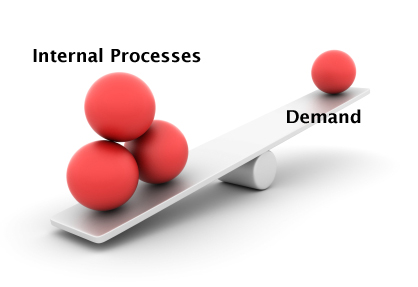Most large manufacturers last year failed to reach their cost-savings targets, despite significant investments in “lean manufacturing,” “Six Sigma” and other productivity programs as part of their overall retrenchment efforts in this tepid economy. Nearly 70% of manufacturing executives say that their manufacturing-improvement efforts led to a reduction in manufacturing costs of less than 5%, the typical minimum threshold for successful productivity programs. That’s according to a survey of manufacturing executives conducted in May and June by AlixPartners, the global business-advisory firm.
“At their core, continuous-improvement programs must include clear priorities based on the expected financial impact,” said Andrew Csicsila, director in AlixPartners’ Manufacturing Practice. “Yet, there remains a pervasive misunderstanding that simply focusing on ‘lean’ and ‘Six Sigma’ processes alone will be the magic fix. Ultimately, it’s not about chasing a process or philosophy. It’s about the cash.”
Can this be true? I am a proponent of Lean and adhere to most of the underlying philosophies that it exhorts. However, I go off on a rant sometimes when I hear that we are always supposed to “wait” for improvements to prove their effectiveness. It is all about culture, you will hear echoed by the top-level consultants. (I always thought it might have been because culture pays betters – sorry just a joke). It seems to always fall back that Leadership is shortsighted and not patient enough, even if it does mean their jobs.
I think improvement efforts should be based on results in the marketplace. In my blog post last week, The Death of PDCA that stated following traditional Lean thinking leads us to focus our efforts of continuous improvement internally versus externally. We are constantly trying to improve internal processes making them more and more efficient. Many companies are seeing little change or improvement from these efforts over their competitors and in the marketplace. Business is Business. If it is not about succeeding in the marketplace and in a crass way cash, what is it about? I hate to take it down to this level because I hold corporations and myself to higher standards than this but let’s face it, if you are not making money, you cannot be effective at what you do.
On one side of the fulcrum we have products and services supported by internal processes and on the other side of the fulcrum are customers or the demand side. There has been a significant shift in the marketplace and at the moment the customer is in control. Supply exceeds demands. However, continuous improvement seems to be still stuck on the wrong side of the fulcrum, the internal processes.
We do not live in a world of excess demand. The strategies that we need for improvement need to be focused on the demand side, the customer. These efforts of continuous improvement must be focused on moving ourselves along the path of our customers. Do you wonder how that path is shaped? A brief synopsis is that path is shaped initially by understanding the knowledge gaps that exist between you and your customers. As that knowledge is shared and made explicit the gaps close and eventually the power of the two organizations is realized. It is in the spirit of Service Design and Innovation that these thoughts will flourish.
Looking back at the beginning of the quality movement can you remember this types of all too common of a scenario described by Tim Ogilvie, CEO of innovation strategy consultancy Peer Insight and co-author of a new book Designing for Growth: A Design Thinking Toolkit for Managers: “We had a VP of production and a VP of quality, and they had an argument on the loading dock on the 30th of the month as to whether we we’re going to ship that order or not. And the VP of quality said, “It’s not high enough quality because I inspected it.” And the VP of production said, “I got to make my order.” It was an adversarial system, and here we are 25 years later and the quality is all baked in because at our workstation we self-inspected and we fulfilled with a Kanban, and we got single minute exchanges. All of these amazing breakthroughs have happened in that time period.”
It is the time for continuous improvement to start tackling the demand side the equation. It is not going to be an overnight success but small gains of moving from frameworks such as cooperation and joint ventures to co-producing and co-creation or platforms of customer-centricity to user-centricity are the starting points. This is the one of the few ways that you can create and sustain demand. And with demand comes increased revenue and market share that can be measured. Without doing this your company may flounder and the results may not be very forgiving.
Related Information:
Work on demand, ‘It’s the demand side, stupid’
The Death of PDCA
When Efficiencies and Innovation no longer work, is Customer Centricity the answer?
Does the Customer Experience mimic the Employee Experience?

Comments are closed.